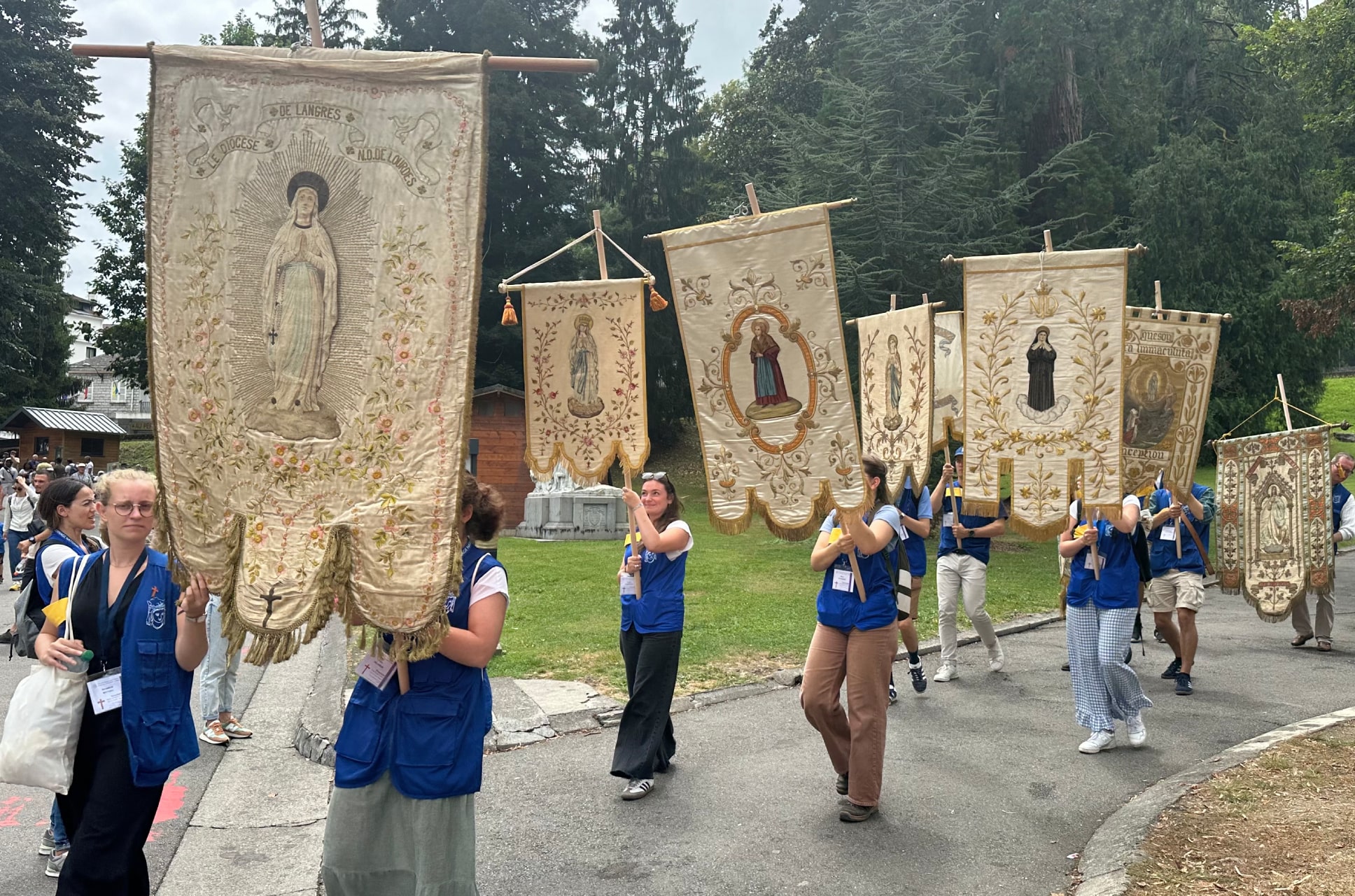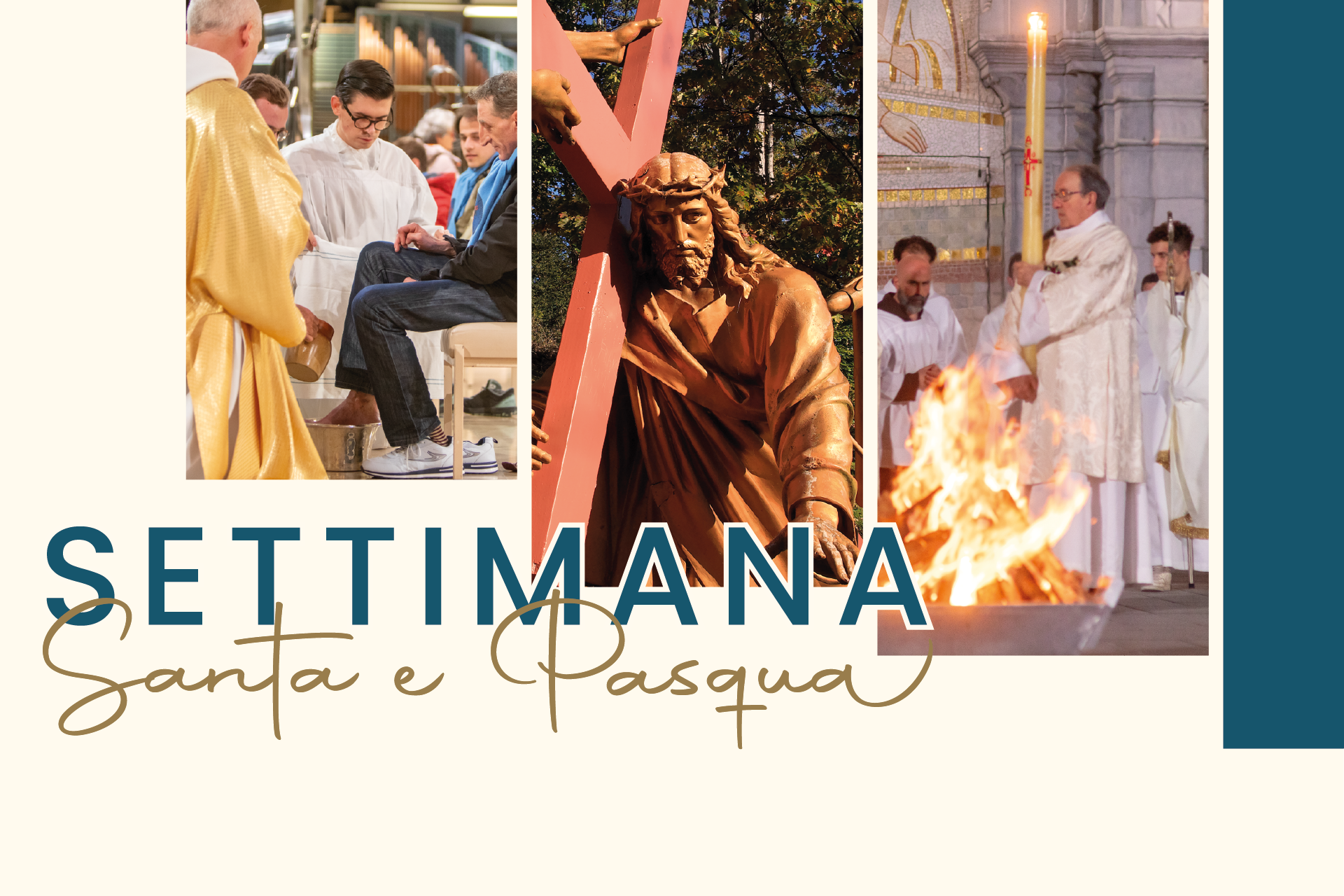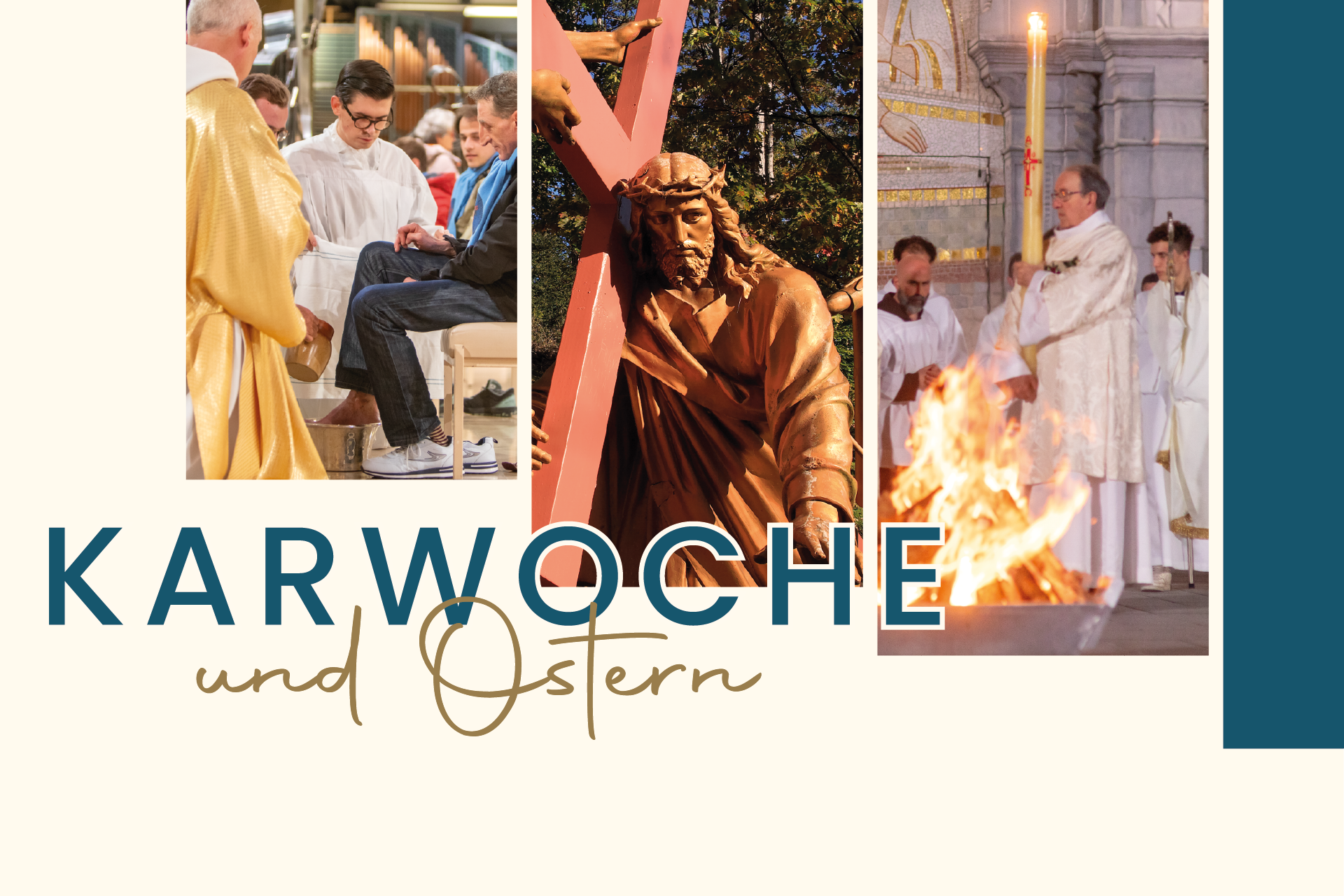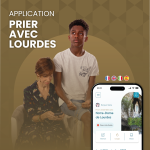Since 1872, pilgrimages to Lourdes have become better organised, with groups coming from all over France, and then from all over the world, carrying banners as a sign of their gratitude and loyalty to Our Lady of Lourdes. These banners, symbols of devotion, became visible testimony to the faith shared by the pilgrims.
In 2024, for the first time in the history of Lourdes, an ambitious historical project has shone a spotlight on the largest collection of religious banners in the world. This painstaking work has resulted in the publication of a unique, illustrated book, featuring over 300 banners, each telling a story linked to pilgrimages to Lourdes over the centuries.
This collection highlights the universal nature of pilgrimages to Lourdes, where believers from all over the world gather to honour the Virgin Mary. The book, published in four languages, is aimed at an international audience, highlighting the worldwide reach of Marian devotion. It traces the history of diocesan banners in France and elsewhere, revealing a textile heritage that is often unappreciated but of great spiritual and artistic richness.
Each banner in this exceptional collection, often in silk or velvet, is magnificently adorned with paintings, embroidery and gilt fringes. Each one is a piece of history, encapsulating a place, an era and a community united by faith in Our Lady of Lourdes. Before being taken down for preservation, the banners used to hang in the Basilica of the Immaculate Conception, providing a majestic spectacle for pilgrims. This was an opportunity to catalogue, photograph and study them with a fresh eye.
A book revealing a rich textile heritage

Pour To showcase this priceless collection, the Sanctuary has just published a book entitled ‘Bannières en procession’ with Jours des Arts (a publisher based in Lourdes), edited by Pascale Leroy-Castillo (Head of Archives and Heritage for the Diocese of Tarbes and Lourdes) with contributions from Bernard Berthod (Curator of the Musée de Fourvière, Lyon), Josiane Pagnon (General Inventory of the Occitanie region), Mgr. Jacques Perrier (Bishop Emeritus of the Diocese of Tarbes and Lourdes) and Robin Dupont (curator of the Sanctuary collections).
This illustrated book is the culmination of extensive research. It presents the diversity and richness of this heritage. Through its pages, the reader encounters stories of gratitude, spiritual testimonies and expressions of religious identity, brought together in this unique collection from the Sanctuary. More than just a compilation of images and stories, this book invites us to explore the evolution of pilgrimages and the deep bond that unites believers from all over the world with Lourdes.
By presenting an extensive inventory of this collection, the book bears witness to the evolution of pilgrimages, while paying tribute to the devotion and loyalty of pilgrims who, generation after generation, continue to respond to the Virgin’s call: ‘…that a chapel be built here and that pilgrims come in procession‘.
Each banner, each procession is a faithful response to this call, marking the deep attachment of believers to this place of grace.
This book is on sale at the Grotto Bookshop.



The first procession in Lourdes
The first procession to be organised in Lourdes took place on 25 July 1864, with the parish of Loubajac, just 7 kilometres away. It was an historic moment.
According to the Lourdes Sanctuary archives: “The men advanced in two rows, followed by the procession of priests and cantors, and behind them, in two rows, the women. Numerous processional litters surmounted by artificial niches carried statues of the Immaculate Conception. A choir of musicians accompanied the long procession all the way to Lourdes.”
“Arriving in Lourdes, the procession was met at the hospice by the Sisters of Nevers and their pupils, among whom was Bernadette Soubirous. The sisters rang the bells of their chapel, which were answered by the bells of the parish church hosting the procession”.
Fr. Peyramale, the parish priest of Lourdes at the time, immediately realised that this pilgrimage was just the first of many.





